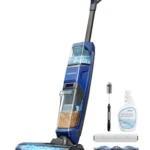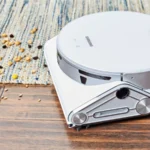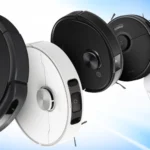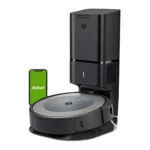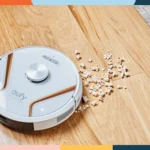If you’re considering investing in a vacuum cleaner, you’ve probably heard about robot vacuum cleaners. These smart devices have been gaining popularity in recent years, thanks to their ability to clean your floors automatically, freeing up your time and energy for other tasks. But are they worth the investment? In this article, we’ll take a closer look at the pros and cons of robot vacuum cleaners, so you can make an informed decision for your home. From their convenience and efficient cleaning to their limitations and need for maintenance, we’ll be exploring it all. So buckle up and let’s dive into the world of robot vacuum cleaners.
Advantages of Robot Vacuum Cleaners
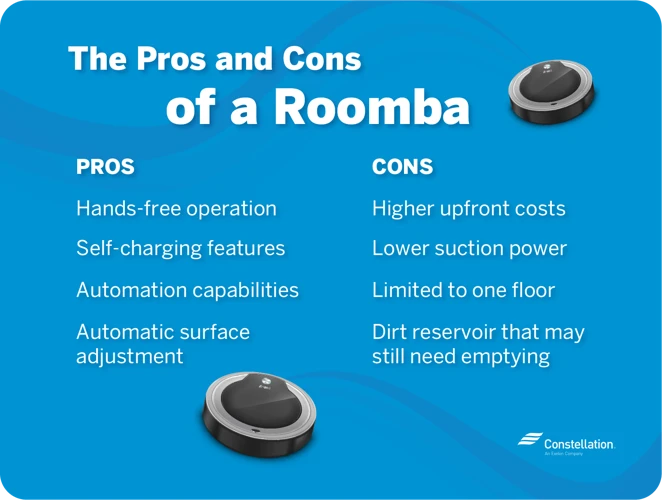
Robot vacuum cleaners have become increasingly popular in recent years, revolutionizing the way we clean our homes. These devices have been designed to work autonomously, relying on advanced sensors and algorithms to navigate around your house and clean up dirt and debris. There are several advantages to using a robot vacuum cleaner that make it a smart investment for any homeowner. From convenience to efficient cleaning, let’s explore the top benefits of owning a robot vacuum cleaner. If you want to learn more about how robot vacuum cleaners work, you can check out our guide to how they work smarter.
1. Convenience
Robot vacuum cleaners have become an increasingly popular cleaning solution in many households. One of their main advantages is their convenience, which makes them an attractive option for people with busy lifestyles. Here are some of the reasons why robot vacuum cleaners are convenient:
- Easy to use: Unlike traditional vacuum cleaners that require you to operate them manually, robot vacuum cleaners are designed to work autonomously. With just a press of a button, you can set them in motion and let them do the work for you.
- Time-saving: Robot vacuum cleaners are programmed to clean areas efficiently and effectively, which means you won’t have to spend hours cleaning your house yourself. This is a huge time-saver and allows you to focus on other important tasks.
- Multi-tasking: One of the biggest advantages of robot vacuum cleaners is that they can work while you’re away from home or doing other chores. This means you can leave the robot vacuum to do its work and come back to a clean house. Talk about convenience!
- Low noise: Many robot vacuum cleaners are designed to operate quietly, which means you won’t have to worry about disturbing your neighbors or roommates while it’s cleaning.
Of course, there are some downsides to consider when it comes to robot vacuum cleaners as well. But the convenience they offer cannot be denied. If you’re thinking about investing in a robot vacuum cleaner, it’s important to do your research and find one that suits your needs and budget. Check out our best robot vacuum guide for more information on the top brands and models available today.
2. Time-Saving
One of the biggest advantages of owning a robot vacuum cleaner is time-saving. With busy schedules and constantly increasing workload, it’s easy to fall behind on household chores. But with a robot vacuum, you can spend your time doing other tasks or just relaxing while your floors get cleaned automatically.
To put it into perspective, let’s compare the time it takes to clean a room with a traditional vacuum cleaner to the time it takes with a robot vacuum. With a traditional vacuum cleaner, you would have to take the vacuum out of storage, unwind the cord, find an available outlet, plug it in, and then manually push the vacuum around the room. This process can take anywhere from 20-30 minutes for a single room.
On the other hand, with a robot vacuum cleaner, you simply press a button and it begins to clean. You don’t have to worry about maneuvering around furniture or getting into tight spaces since robot vacuums are designed to navigate around obstacles and reach tight spaces effortlessly. Additionally, most robot vacuums have a charging dock that they automatically return to when they need to charge, so you don’t have to worry about storing it away every time you’re finished.
According to a study conducted by Consumer Reports, a well-known consumer advocacy group, robot vacuums take an average of 1 hour and 20 minutes to completely clean a 16×16 foot room. This may seem like a lot of time, but since it’s all done automatically, you can spend that time doing something else like cooking dinner or watching a movie.
It’s worth noting that while robot vacuums can save you time, they’re not perfect. They may miss spots or not clean as deeply as a traditional vacuum cleaner. However, with regular use, they can keep your floors relatively clean without much effort on your part. To maximize the efficiency of your robot vacuum, make sure to follow cleaning and maintenance instructions, and consider utilizing programmable features to have it clean on a set schedule.
If you’re looking to save time on household chores, a robot vacuum cleaner can be a great investment. To learn more about robot vacuums, you can read our article on comparing robot vacuum brands or check out our tips on maximizing efficiency with your robot vacuum.
3. Efficient Cleaning
One of the main advantages of robot vacuum cleaners is their efficient cleaning capabilities. These devices are equipped with powerful suction and brushes capable of picking up dirt and debris from a range of surfaces, including carpets, hardwood floors, and tile.
One of the most important factors to consider when shopping for a robot vacuum cleaner is its cleaning performance. Some models are more effective than others, so it’s important to do your research and look for one with strong suction power and quality brushes.
To help you compare different models, here’s a table outlining the cleaning performance of some of the top robot vacuum cleaners on the market:
| Robot Vacuum Cleaner Model | Suction Power (Pa) | Brush Type | Cleaning Modes |
|---|---|---|---|
| iRobot Roomba i7+ | 10,000 | Dual Multi-Surface Rubber Brushes | Auto, Spot, Edge, and Custom Cleaning Modes |
| Ecovacs Deebot N79S | 1,000 | Direct Suction and Main Brush | Auto, Edge, and Spot Cleaning Modes |
| Shark IQ Robot Vacuum R101AE | 1,000 | Self-Cleaning Brushroll | Auto, Spot, and Edge Cleaning Modes |
As you can see, the iRobot Roomba i7+ has the most powerful suction at 10,000 Pa, along with a dual multi-surface rubber brush that’s specially designed to pick up pet hair. The Ecovacs Deebot N79S and Shark IQ Robot Vacuum R101AE have slightly less suction power, but still offer strong cleaning performance with their combination of direct suction and brushroll technology.
Robot vacuum cleaners offer efficient cleaning performance that can save you time and effort in your housekeeping routine. With a range of advanced features and capabilities, these devices are continually improving to deliver even better cleaning results.
For those who are interested in learning more about the future of robotic vacuum technology, be sure to check out our article on what to expect from future robot vacuums. Or, for pet owners looking for specialized cleaning solutions, see our guide to the top robot vacuums for pet hair.
4. Can Reach Tight Spaces
Robot vacuum cleaners can reach tight spaces that regular vacuum cleaners can’t. They have a compact size and sleek design that allows them to maneuver around difficult corners and narrow gaps with ease. This feature is particularly useful for cleaning under furniture, which is a difficult area to reach with a regular vacuum cleaner.
Here are some of the tight spaces that a robot vacuum cleaner can clean:
- The space between the bed and the wall
- The area beneath the sofa
- The narrow space between furniture pieces
- The corners of rooms
As robot vacuum cleaners are typically small and slim, they can access these tight spaces without any trouble. This means that dust and dirt that accumulates in these hard-to-reach areas can be easily cleaned.
There are two ways that robot vacuum cleaners can reach tight spaces:
- Intelligent Navigation: Some robot vacuum cleaners are equipped with advanced navigation systems that allow them to map out the area they need to clean. They use sensors to identify obstacles, detect cliffs, and navigate around the room. With this technology, the robot vacuum cleaner can find and reach tight spaces, without getting stuck or falling off edges.
- Design: Robot vacuum cleaners are designed to be compact, slim, and able to move around easily. They have a low profile that allows them to fit under furniture pieces and reach tight spaces. Additionally, many robot vacuum cleaners come with attachments, such as a crevice tool or a brush, which make it easier to reach corners and narrow gaps.
The ability of a robot vacuum cleaner to reach tight spaces is a huge advantage over traditional vacuum cleaners, making it the perfect cleaning tool for those living in small apartments or houses with tight corners and hard-to-reach areas.
5. Programmable Features
One of the significant advantages of robot vacuum cleaners is their programmable features. These features enable users to customize the cleaning schedule according to their requirements. Robot vacuum cleaners can be programmed and set on a schedule even when the user is not at home. This means that the device will start cleaning at the designated time, regardless of whether anyone is home or not.
Robot vacuum cleaners also have a mapping feature that allows users to program the device, specifying certain areas of the house to be cleaned. This is especially helpful if there are specific parts of the house that need cleaning more frequently than others. Additionally, certain robot vacuums, like the Roomba i7+ or S9+, have a self-emptying feature which allows them to store the debris and re-charge without human intervention.
Programmable features of robot vacuum cleaners are incredibly convenient, as they allow users to have a clean house without having to worry about the cleaning process. However, users must also be aware of the limitations of these features. Certain robot vacuum cleaners may have a limited number of programmable features, and users may need to invest in more advanced devices to take advantage of more in-depth customization options.
To summarize, the programmable features of robot vacuum cleaners are incredibly useful and convenient. The ability to set the cleaning schedule, specify the cleaning areas, and even the self-emptying feature makes robot vacuum cleaners a time-saving and efficient solution for cleaning the house.
Disadvantages of Robot Vacuum Cleaners
While robot vacuum cleaners have gained popularity for their convenience and efficient cleaning, they still come with their fair share of drawbacks. In this section, we’ll take a closer look at the downsides of relying on these autonomous cleaners to keep our floors spotless. It’s important to consider both the pros and cons before investing in a robot vacuum, as the disadvantages may outweigh the benefits for some households. Let’s delve into the potential pitfalls of using a robot vacuum cleaner.
1. Expensive
There’s no doubt that robot vacuum cleaners are a technological wonder, but as with any advanced gadget, they come at a price. Cost is one of the biggest disadvantages of robot vacuum cleaners, making them an investment that not everyone is prepared to make. Let’s take a closer look at the expenses involved with owning one of these machines.
Firstly, the upfront cost of a robot vacuum cleaner can be considerably higher than a traditional upright or canister vacuum cleaner. Robot vacuums can range anywhere from $100 to over $1,000, depending on brand and features. The higher-end models often come with advanced computer algorithms and features like mapping, voice control, self-emptying dustbins, and more.
But it’s not just the cost of the machine itself. Robot vacuum cleaners also come with maintenance costs, mainly because they require regular cleaning and part replacements. The filters, brushes, and dustbins need cleaning after each use to ensure optimal performance, and parts like the battery may need to be replaced after a few years. These additional costs can add up quickly over time, making the overall cost of ownership even higher.
To put things into perspective, below is a table summarizing some common robot vacuum models and their associated costs, including maintenance expenses:
| Robot Vacuum Cleaner Model | Upfront Cost | Maintenance Expenses (per year) |
|---|---|---|
| iRobot Roomba s9+ | $1,099 | $100 – $200 |
| Eufy RoboVac 30C | $299 | $50 – $100 |
| Shark IQ Robot Self-Empty XL | $549 | $75 – $125 |
| Xiaomi Mi Robot Vacuum-Mop | $249 | $50 – $75 |
While robot vacuum cleaners offer unparalleled convenience and efficiency, their initial cost and maintenance expenses may be too high for some people. Before investing in one of these machines, it’s important to carefully consider all the costs and benefits to determine if it’s the right choice for your household.
2. Limited Capabilities
Although robot vacuum cleaners are efficient and convenient, they still have their limitations. Here are the limited capabilities of robot vacuum cleaners:
- Inability to Navigate Stairs: Robot vacuums cannot climb stairs or clean elevated surfaces like furniture tops. They are not ideal for homes with multiple floors or tall furniture.
- Not Suitable for Deep Cleaning: Although robot vacuums can pick up dust, debris, and pet hair, they lack the power needed for deep cleaning tasks such as removing stains or dirt from carpets.
- Sensors and Obstacles: Robot vacuums are equipped with sensors that allow them to detect and avoid obstacles. However, some models may struggle with certain objects or dark-colored surfaces, causing them to get stuck or miss areas.
- Size and Shape: The size and shape of robot vacuums can also limit their capabilities. For example, some models may not fit under low furniture or in tight spaces, making it difficult for them to clean certain areas.
- Noise Level: While robot vacuums are generally quieter than traditional vacuum cleaners, they can still produce some noise during operation, which may be disruptive to some users.
It is important to note that these limitations vary among different models and brands of robot vacuums. Before making a purchase, it is important to research and compare different models to ensure they have the features that meet your specific needs.
3. Need for Maintenance
Keeping your robot vacuum cleaner in top condition is important to ensure its longevity and efficient cleaning performance. However, there are some maintenance tasks that you may find to be a nuisance. Here are some things to keep in mind regarding the need for maintenance of robot vacuum cleaners:
- Cleaning the dustbin: Robot vacuum cleaners come with a dustbin that needs to be emptied regularly. Failure to do so may result in reduced suction power and poor cleaning performance. It’s important to follow the manufacturer’s instructions for cleaning the dustbin and replacing the filters, so the robot can function properly.
- Clearing the brushroll: The brushroll on the robot is responsible for picking up dirt, hair, and other debris. However, it can become tangled and clogged over time, reducing its effectiveness. It’s important to remove and clean the brushroll regularly to ensure that it remains free of debris and can continue to work properly.
- Checking the wheels: Robot vacuum cleaners are equipped with wheels that allow them to move around your home. Over time, these wheels can become worn or damaged, making it difficult for the robot to move around as it should. Regularly checking the wheels and replacing them when necessary can help to prolong the life of the robot.
- Updating the software: Some robot vacuum cleaners come with software that can be updated to improve performance or add new features. It’s important to check for and install any available updates to ensure that your robot vacuum cleaner is functioning at its best.
- Charging the battery: Robot vacuum cleaners are powered by a rechargeable battery. Over time, the battery can become less efficient, reducing the amount of time the robot can run on a single charge. It’s important to follow the manufacturer’s instructions for charging the battery and replacing it when necessary.
While the need for maintenance may seem intimidating, it’s important to keep in mind that these tasks are relatively easy to perform and can help to prolong the life and improve the performance of your robot vacuum cleaner. By following the manufacturer’s instructions and performing routine maintenance tasks, you can keep your robot vacuum cleaner performing at its best for years to come.
4. Can Get Stuck
One of the biggest drawbacks of robot vacuum cleaners is that they can get stuck in certain areas of your home. While these devices are typically designed to navigate obstacles and avoid falls, they may still struggle in some situations. Let’s take a closer look at some of the ways in which robot vacuums can become stuck.
1. Getting Caught on Cords and Small Objects: Robot vacuums may encounter cords, shoelaces, or other small objects while cleaning. When this happens, the vacuum can become tangled or caught, preventing it from completing its task.
2. Running out of Battery: Depending on the size of your home, your robot vacuum may need to recharge several times throughout the cleaning process. If it runs out of battery before it finishes the job, the vacuum may become stuck in the middle of the room.
3. Getting Wedged Under Furniture: Robot vacuums are typically designed to fit under furniture and other low-lying objects. However, there may be cases where the vacuum gets wedged under a couch or table and is unable to move.
4. Struggling with Stairs and Uneven Surfaces: While most modern robot vacuums have sensors that help them avoid falling down stairs, they may still struggle with navigating uneven surfaces. For example, if your home has a raised threshold between rooms, your robot vacuum may have difficulty crossing it.
5. Problems with Carpet Pile and Texture: Robot vacuums can have trouble cleaning thick carpet or rugs with a high pile. They may also struggle to navigate through rooms with lots of furniture or clutter on the carpet, as they may become stuck or trapped.
While robot vacuums are convenient and efficient cleaning devices, they do have some limitations. They can become stuck in certain areas of your home, and may require some maintenance and troubleshooting to ensure they operate smoothly. Keep these limitations in mind when considering whether or not a robot vacuum is right for your home.
5. Not Ideal for Specific Cleaning Needs
When it comes to robot vacuum cleaners, they are not always the best solution for specific cleaning needs. While they may be great for daily maintenance cleaning, there are certain tasks that they may not be able to handle adequately.
Here are some specific things that robot vacuums may struggle with:
- Cleaning stairs: Most robot vacuum cleaners are designed to stay on one level, so cleaning stairs is not within their capabilities. You’ll still need to pull out your traditional vacuum cleaner or broom to do this task.
- Cleaning upholstery: If you have pet hair on your couch or curtains, your robot vacuum may not be powerful enough to effectively clean it up.
- Deep cleaning carpets: While robot vacuums are great for daily maintenance on carpets, they may struggle with deep cleaning. You may need to use a traditional vacuum cleaner or hire a professional cleaning service for this task.
- Picking up large debris: Robot vacuum cleaners typically have small dustbins, so they may not be able to handle larger debris like leaves or cereal. You’ll need to manually remove this debris before running your robot vacuum.
- Cleaning in the dark: Some robot vacuum cleaners use sensors to navigate their cleaning path, but they may not be able to properly function in complete darkness.
It’s important to know the limitations of a robot vacuum before making a purchase. While they can be a great addition to your cleaning routine, they may not be able to handle all of your cleaning needs.
Conclusion
In conclusion, while robot vacuum cleaners can offer a range of benefits, such as convenience, time-saving, efficiency, and programmable features, there are also several disadvantages to consider, such as the expensive price tag, limited capabilities, need for maintenance, potential for getting stuck, and their suitability for specific cleaning needs.
Overall, the decision to invest in a robot vacuum cleaner ultimately depends on personal preferences and priorities. If you prioritize convenience and efficiency over the cost and limitations of these devices, then a robot vacuum cleaner may be the perfect addition to your household. However, if you have specific cleaning needs that require more specialized attention or if you are on a tight budget, then a traditional vacuum cleaner may be a better option.
Regardless of your decision, it is important to research and compare different models and brands before making a purchase. Look for online reviews and customer feedback, visit physical stores to see the vacuum cleaners in action, and consider factors such as suction power, battery life, maneuverability, and durability.
At the end of the day, a clean home is a happy home, and whether you choose to invest in a robot vacuum cleaner or stick to a traditional vacuum cleaner, the most important thing is to prioritize regular cleaning to maintain a healthy and hygienic living environment for you and your loved ones.
Frequently Asked Questions
What types of floors can be cleaned by robot vacuum cleaners?
Robot vacuum cleaners can clean various types of floors such as hardwood, tiles, carpets, and rugs, depending on their features.
Are robot vacuum cleaners noisy?
Some robot vacuum cleaners may produce noise, especially those with high suction power. However, most models are designed to operate quietly.
What is the battery life of a robot vacuum cleaner?
The battery life of a robot vacuum cleaner varies depending on the model and usage. Some may last up to 120 minutes, while others may only last for 60 minutes.
Can robot vacuum cleaners clean corners?
Robot vacuum cleaners are designed to reach tight spaces and corner edges. However, some models may have difficulty cleaning corners compared to others.
Can robot vacuum cleaners avoid stairs and obstacles?
Yes, most robot vacuum cleaners are equipped with sensors and can detect stairs and obstacles to avoid falling or getting stuck.
How do you program a robot vacuum cleaner?
Programming a robot vacuum cleaner can be done using the manufacturer’s mobile app, remote control, or virtual assistant such as Alexa or Google Home.
Can robot vacuum cleaners be used for pet hair?
Yes, some robot vacuum cleaners are specifically designed to pick up pet hair and fur, making them ideal for households with pets.
How often should I empty the dustbin of a robot vacuum cleaner?
It is recommended to empty the dustbin of a robot vacuum cleaner after each use or when it reaches its maximum capacity.
What is the average lifespan of a robot vacuum cleaner?
The average lifespan of a robot vacuum cleaner is around 2 to 3 years, depending on usage and maintenance.
Will a robot vacuum cleaner replace traditional vacuum cleaners?
While a robot vacuum cleaner offers convenience and time-saving benefits, it may not be able to replace traditional vacuum cleaners for deep cleaning and specific cleaning needs.


